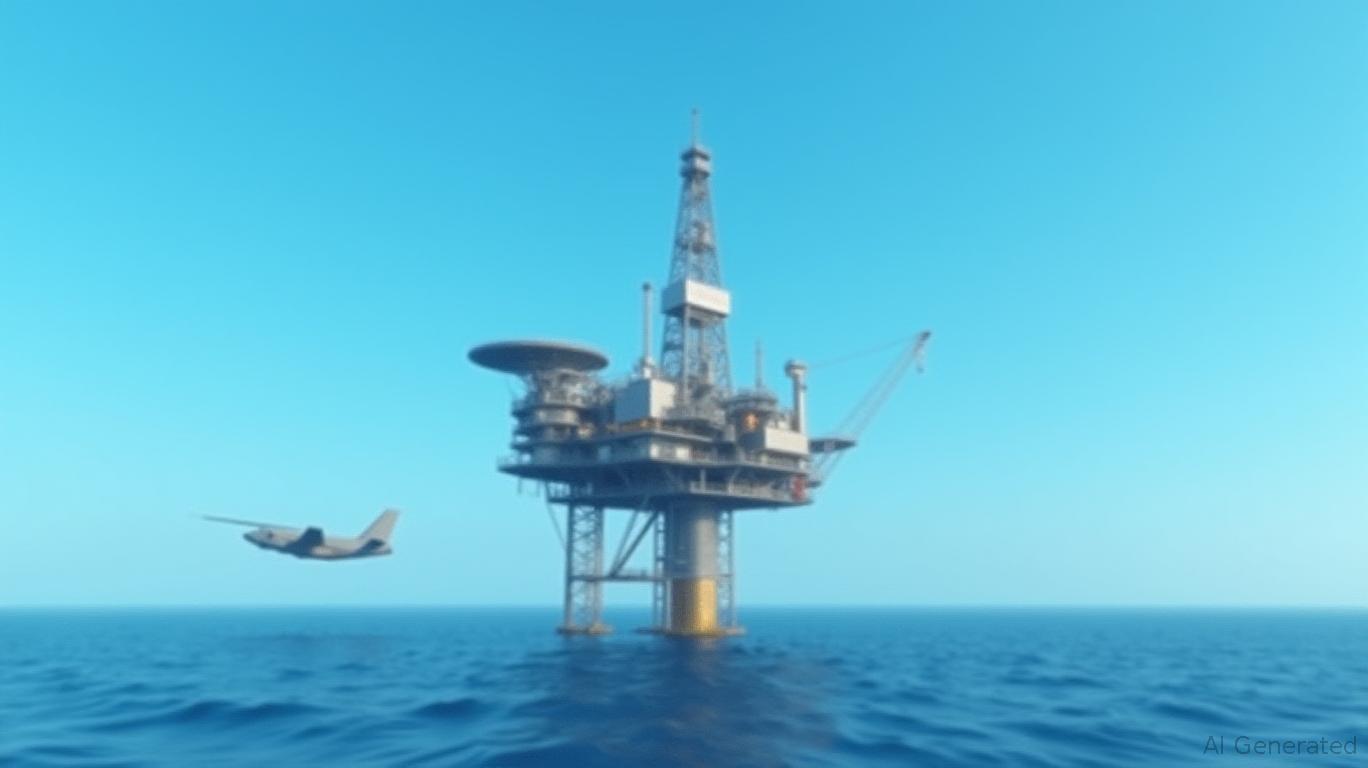Navigating Geopolitical Storms: Energy and Defense Plays in a Volatile Middle East
The U.S. military strikes on Iran's nuclear facilities on June 1, 2025, have ignited a geopolitical firestorm, sending shockwaves through global markets. As tensions escalate between Tehran and Washington, with Israel's ongoing campaign against Iranian targets, investors face a high-stakes environment of volatility—and opportunity. Energy commodities and defense equities are positioned to benefit from prolonged instability, offering strategic entry points for those willing to navigate the risks.

Energy Markets: A Volatile Crucible for Profit
The immediate aftermath of the U.S. strikes sent Brent crude prices soaring by 18%, breaching $80/barrel—a near five-month high. Analysts at Oxford Economics warn that a full Iranian retaliation—such as closing the Strait of Hormuz—could push prices to $130/barrel, driven by fears of supply disruption. This chokepoint, through which 20% of global oil flows, remains a critical vulnerability.
Strategic plays in energy:- Overweight integrated producers with diversified assets:
(CVX), TotalEnergies (TTE), and Saudi Aramco (2222.SA) benefit from higher prices while offering resilience against regional supply shocks. - Short-term options strategies: Consider call options on oil ETFs like USO to capitalize on spikes, while hedging with put options to protect against geopolitical tail risks. - Avoid Iranian-linked assets: Sanctions and secondary market risks make direct exposure to Iranian energy firms unwise.Defense Sectors: A Boom in Asymmetric Warfare Tech
The U.S. deployment of bunker-busting GBU-57 bombs and advanced stealth bombers underscores a shift toward high-tech warfare. Defense contractors specializing in missile defense, cyber resilience, and drone systems stand to gain from elevated military spending.
Top picks in defense:- Raytheon Technologies (RTX): Leader in missile defense systems, including the PATRIOT missile, critical for Gulf states countering Iranian threats. - General Dynamics (GD): Subsidiary General Dynamics Mission Systems supplies cybersecurity solutions for defense infrastructure. - Lockheed Martin (LMT): Developer of hypersonic weapons and F-35 fighter jets, key to U.S. and allied air superiority. - Cybersecurity plays: Palo Alto Networks (PANW) and CrowdStrike (CRWD) are vital for protecting energy and military infrastructure from Iranian cyberattacks.
The Diplomatic Wild Card: How Peace Could Still Pay Off
While markets fear escalation, a negotiated off-ramp remains possible. If Iran agrees to a ceasefire or accepts mediated talks—potentially under Oman's auspices—the resulting de-escalation could stabilize oil prices and reduce defense budget urgency. Investors should monitor signals like renewed IAEA inspections or U.S.-Iran backchannel talks.
Risk Management: Balancing Volatility and Reward
- Diversify across sectors: Pair energy equities with defense stocks to hedge against divergent outcomes (e.g., oil spikes vs. diplomatic breakthroughs).
- Leverage ETFs: The iShares Global Aerospace & Defense ETF (ITA) offers broad exposure to defense trends, while the Energy Select Sector SPDR (XLE) tracks top energy names.
- Stay nimble on oil: Use inverse ETFs like DNO to protect against sudden price drops if tensions ease.
Conclusion: A High-Reward, High-Volatility Landscape
The U.S.-Iran conflict has created a geopolitical tinderbox, but also a fertile ground for strategic investors. Energy commodities and defense equities are the primary beneficiaries of this volatility, with opportunities to profit from both sustained instability and eventual de-escalation. Investors should prioritize companies with regional operational expertise, advanced technology portfolios, and exposure to Gulf-state procurement. The next 90 days will clarify whether this crisis becomes a prolonged conflict—or a catalyst for transformative market trends.
Final Take: Go long on Chevron, RTX, and PANW; use ETFs for broad exposure. Monitor Strait of Hormuz developments and U.S.-Iran diplomatic signals to time entries and exits. This is not a market for the faint-hearted—but for the prepared, the rewards are substantial.

Comments
No comments yet